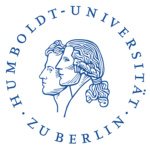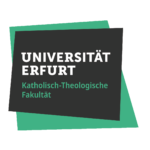Mysticism and Neomysticism. Topologies of the Soul in the Writings of Teresa of Avila and Simone Weil
Körper-zu-Sein. Eine Verortung. Er-und Zer-Schreiben bei Simone Weil, Chris Kraus, Kathy Acker und Annie Ernaux
La collectivité est plus puissante que l’individu dans tous les domaines, sauf un seul: penser.
Cahier I, ms. 9
Œuvres complètes VI.I, Paris 1994, 78
Martina Bengert
Mysticism and Neomysticism.
Topologies of the Soul in the Writings of Teresa of Avila and Simone Weil
My project Mysticism and Neomysticism. Topologies of the soul in the Writings of Teresa of Avila and Simone Weil intends to highlight the links between two inflections of mystical thought. Teresa of Avila is a representative of early modern Spanish mysticism, a scholar whose influence on both the West’s mystical and philosophical discourse was fundamental. Drawing on the works of Simone Weil (1909–1943), I then want to introduce the term neomysticism to define a strand of 20th-century French philosophy as mystical discourse. Although Weil develops her mysticism by returning to and expanding early modern mysticism, the prefix ‘neo’ here indicates that she does so from within a markedly different horizon. She studied the bible, and was deeply interested in Spanish mysticism. Her Cahiers include negotiations of French mysticism (Marguerite Porete, Thérèse de Lisieux) and repeated references to John of the Cross and the Dark Night of the Soul, but according to my research, they do not mention the writings of John’s teacher and companion, Saint Teresa – despite the fact that both women shared a very similar understanding of God’s mercy, humility, and ineffability. I intend to trace this connection that neither Simone Weil nor research have made visible so far, and distill it into a figure of thought that I want to refer to as a topology of the soul.
Such a topology of the soul as a nexus between both women will have to identify a topologically conceived “space of the soul” (Seelenraum) as the kernel of mystical thought, both in the writings of Teresa and Simone Weil. Unlike topography, topology does not designate a specific, (geo)graphically or materially enclosed space.
Instead, it establishes spatial relations, a fact that allows me to base my reflections on the conditions of spatial arrangements, and yet from the outset avoid the risk of homogenizing these relations or considering them as givens. The innovative potential of approaching mysticism via a topology of the soul lies in its linking of topology as a description of spatial relationality with semantic methods of relationizing and deferral (metaphor, for example), which enables analysis to shift from the descriptive or representational level of both the topographical and of content (énoncé) back to the level of the énonciation. In this way, analysis can take into account the fact that neither Teresa of Avila’s nor Simone Weil’s texts simply describe or map specific spaces of the soul. Rather, they proceed topographically by integrating into their reflections the conditions under which they constantly open up and make accessible these spaces, and they remarkably often do so by resorting to structural and/or semantic analogies: Teresa’s metaphors are, on the one hand, very specific, and attempt to assign to the soul a conceivable and enclosed space (for example a fortress, a mansion or chambers); on the other hand, she dissolves the borders of this space through the manner in which she uses analogies to layer possible spatial constellations vertically or horizontally. In this way, each new analogy captures the manner in which each of her individual spatial conceptualizations differs from the next. It also makes visible rhetorically in early modern analogical thought not only that which is similar, but especially that which is non-identitary. In this way, Teresa already articulates within the episteme of resemblance (Foucault) structures that will be rediscovered in 20th-century France from within a different intellectual horizon. I want to argue that Simone Weil’s Cahiers are on the one hand an emblematic expression of différance-based thought emerging in France at the time – a school of thought continually reflecting its own conditions of thought and writing, expressing them for instance in the spatial arrangement of words as lists. At the same time, though, her Cahiers bear witness to a form of analogical reasoning firmly rooted in the tradition of Platonism that seeks to identify behind the visible differentiality of such lists the realm of the similar as an aspect of analogy focused on the identical. I intend to show that her mysticism spells out in words – and literally spreads out across the Cahiers’ pages – the soul’s relationship with God as a differential topology of the soul. To distinguish such an observer-dependent topology of the soul from a topography or architecture of the soul, my project will analyze Teresa of Avila’s main work Castillo interior o Las moradas and Simone Weil’s Cahiers, and contrast them with selected passages from Plato’s Timaeus.
Since Western mysticism cannot be understood without reference to Platonic thought and its theological radicalization in Neoplatonism, I will also ask how Teresa and Simone Weil specifically reformulate and shift the emphasis of Plato’s somatic localizations of the soul in the Timaeus. My hypothesis is that both women radicalize the topography of the soul developed in the Timaeus into two forms of a topology of the soul, and thus into two possible inflections of mystical, analogy-based reasoning. While the Cahiers make Simone Weil’s references to Plato explicit, it will take further research to show whether Teresa’s moradas were influenced by (Neo)Platonic thought.
I therefore intend to reveal how Teresa creates, against the background of (Neo)Platonic thought, a body-affirming topology of the soul, while Simone Weil engages in a physical and literary process of décréation to take (Neo-)Platonism’s mind-body dualism to extremes. My project will develop its unique angle by intersecting literary studies, philosophy, theology, and logics. Building on the topology of the soul as a core concept will allow me to pursue two tasks: to develop a sophisticated theoretical approach, and, on the basis of a close reading and interpretation, to provide literary topology, which is still a relatively young discipline, with new insights.
La collectivité est plus puissante que l’individu dans tous les domaines, sauf un seul: penser.
Cahier I, ms. 9
Œuvres complètes VI.I, Paris 1994, 78
Max Walther
Körper-zu-Sein. Eine Verortung. Er-und Zer-Schreiben bei Simone Weil, Chris Kraus, Kathy Acker und Annie Ernaux
In meinem Projekt Körper-zu-sein untersuche anhand feministischer (Gegenwarts-)Literaturen die Relationen zwischen (transgressiven) Praktiken des Körpers und Subjektkonstitution vor der Folie eines immer-schon-immer unumgänglichen Mit-seins der Medien. Dabei bediene ich mich vornehmlich der Praxis-Theorie von Michel Foucault, den Überlegungen zu subjekt-praktischen Ein- und Ausfaltungen Gilles Deleuzes und Félix Guattaris, der performative philosophy Simone Weils sowie aktuelleren Theorien des „non-human turns“ (Haraway, Butler, Bennett, Barad u.a.).
Schreiben – näher zu analysieren über drei einzuführenden Begriffs-erweiterungen: Er-, Zer-Schreiben und Verortung – verstehe ich hierbei als anthropomediales Gefüge, das maßgeblich an Subjektivierungs-prozessen teilhat, beziehungsweise Subjektivität zuvorderst (co-)konstituiert. Konstitution wird hierbei als stets als relationale, prekäre und temporäre Operation verstanden, die sich nicht zuletzt den écrituren der Texte des Korpus ent-/er-lesen lässt.
Analysiert werden die Beziehungen zwischen Körpern und Äußerungs-subjekten, näherhin die Beziehungen zwischen Schreibverfahren, respektive der co-operierenden Medien und Körperpraktiken, wie vor allem Askese, Anorexie und Sadomasochismus. Rückgebunden wird diese Beschäftigung an Fragen der Subjektkonstitution, welche keineswegs kognitive, psychische Prozesse für eine mögliche Konstitution hervorhebt, sondern vielmehr solche an den Körper gebundenen Praktiken sowie der im Prozess involvierten technischen Artefakte, welche immer schon mit den werdenden Körpern Beziehungsgefüge bilden. Dabei folgt der Ansatz der Feststellung, dass Selbst-Bewusstsein, sowie Selbst und Bewusstsein und damit auch Subjektivität nicht Resultat geistiger Selbstsetzung sind, sondern sich im Prozess praktischer Tätigkeit, in Formen menschlichen Handelns (praxis) bilden. Jene Konzeptualisierung von Praxis soll, ausgehend von Foucault über Judith Butlers Fortschrift und Karen Barads, Vicky Kirbys und Donna Haraways Interventionen weiterentwickelt werden, um darüber die spezifische Relationalität von menschlichen Subjekten und den diesen umgebenden Objekten, beziehungsweise dem nicht-menschlichen Anderen zu klären. Dabei wird von der theoretischen Prämisse ausgegangen, dass das menschliche Subjekt nicht-niemals autonom, souverän und singulär denkbar ist, sondern sich in und durch Verflechtungen konstituiert. Dass das Andere immerschon-immer teilhat am Körpern wie Welten.
[“There are, I say for the last time, three things that strike fear. The third is a bodywriting. Only those who pass through there understand what it is. And that it is of interest to no one”, stellt Maria Gabriela Llansol ihrem Text »The Book of Communities« voran. Zu lesen als Lektüreanweisung, als Hinweis an die Leserin – wie sie nicht untypisch sind für mystische Texte, oder Texte, die man in Rekurs auf Amy Hollywood, dem „(new) feminist mysticism“ zurechnen könnte – stellt jene Anmerkung zwei Fragen: die nach dem bodywriting und vor allem die nach dem passing through, also dem Lesen. Folgt man Birgit Mara Kaisers und Kathrin Thieles Lektüre von Karen Barads Theorie der diffraction und des entanglement, bedeutet Lesen auch immer gleich Ein-/Fort-/Weiter-schreiben. Lesen als Schreiben, als Welten (worlding), wobei hiermit der Idee prä-existierender, stabiler und autonomer Entitäten per se widersprochen wird. „Reading insights through one another“ bedeutet das Werden hervorzuheben: Text, Welt, Leserin konstituiert sich (wird) im und durch die Prozesse des passing throught. In Interaktion, mit Barad Intra-aktion zwischen mannigfaltigen Akteuren: menschlichen Subjekten, Medien und Institutionen. Verstanden als körperlich-leibliche Operation, bei welcher der „ganze Rest des Seienden“, wie Nancy es formuliert, mit-wirkt (und -wird), stellt das Er-Lesen als Co-kreation einen spezifischen Modus der Performativität aus; wird zur Performance, in der die „Welt zum Verb“ wird. (Er-)Schreiben und (Er-)Lesen ist worlding, „eine Sache des Werdens“ und stellt damit nicht lediglich Fragen nach einem potentiellen Wissen – sowie dessen Re-Produktion –, sondern zentraler nach dem Sein(-werden) und noch zentraler nach dem Ethischen, dem Politischen. Epistemologie, Ontologie und Ethik als immer-schon-immer verflochten denkend und damit nicht isolierbar zu untersuchen, stellt diese Arbeit den Versuch dar, über einen spezifischen Modus des Lesens (welcher dem dekonstruktivistischen Ideal des Kommentierens, dem „Rändervollschreiben“ ähnlich ist), der Theoretisierung des Er-/Zer-Schreibens sowie der Verortung das Ko zu apostrophieren, indem das Geflecht und Geflochten-sein ernst genommen wird. “The goal is to try to hear what I cannot assimilate.” Aufgabe, wenn nicht Verantwortung, dieses hier vorgeschlagenen Lesen-Schreibens ist es über eine ausdifferenzierte, aufmerksame, Beschreibung des immer-schon-immer Mit-seins der Medien das Anthro weiter einzuklammern, um ein Konzept der fundamentalen Ko-Ontologie zu er schreiben, welches immer-schon-immer eine Epistem-Ethik-Ontologie ist.]
La collectivité est plus puissante que l’individu dans tous les domaines, sauf un seul: penser.
Cahier I, ms. 9
Œuvres complètes VI.I, Paris 1994, 78
Tom Sojer
Sacred Tropes. Simone Weil's Scriptural Exercise of Philosophy
The project “Sacred Tropes” explores micropolitics of reading, i.e., the transformational promise in practices altering the way one is reading oneself and world. Here, I focus on the writings of Simone Weil and her concept of lecture. Against this backdrop, I apply traditional techniques of tropological exegesis. The umbrella term ‘tropology’ historically summons practices in different religious traditions that apply a performative hermeneutics of sacred text: This is, the meaning of divine text discloses reality in the way text affects, is lived out, and turns out embodied in the reader’s life and history. Considering Simone Weil’s transformational concept of lecture, I investigate the relationship between, on the one hand, textual shifts in meaning when applying sacred tropes, and, on the other hand, performative shifts in action when exercising tropological exercises. I argue that, for Simone Weil, applying sacred text, especially biblical tropes, provides textual instruments to shift thought in a way to encounter reality in human life aiming at the sacred as the fugitive concreteness in everyday life rather than an abstract concept of God.
Some shreds in the process of growing into a conceptual rag rug:
The scriptural exercise of philosophy demonstrates how tropes often function both as a rhetoric figures in the text and a performative tool at work in the reader’s life. Likewise, Weil’s application of the Platonic trope μεταξύ serves both as a trope with new meaning in her philosophical writing and provides a distinctive theory of what I call “tropology ”. Philippe Quéau explains this relationship of μεταξύ and tropology at work in the reader’s life in the following way:
Les tropes constituent la version rhétorique des déplacements topologiques. Le mot même de déplacement, essentiellement topologique, évoque aussi la métaphore figurativement. Réciproquement, l’étymologie du mot métaphore est liée au transport, comme on a vu […] or la pensée métaphorique n’est pas sans analogie avec la pensée métaphysique. La science de métaphores, comme la théologie, tente de révéler quelque chose malgré le voilement inhérent à cette révélation même. On ne peut nommer l’ineffable, on ne peut que « tourner » autour de lui … ou se déplacer par rapport à lui. C’est le sens premier du mot « trope ». La métaphore, comme déplacement, est image elle-même de la procession de toute âme vers de divin. Comme disent les maîtres mystiques, l’homme doit ne ressembler à personne, c’est alors qu’il est semblable à Dieu.
In Graeco-Roman antiquity, τρόπος combines the meanings of changing/turning (from one reading to another: towards something/someone) and the meaning of the way of living one’s life/moral orientation. Furthermore, the Nouvelle Théologie and its relation to the monastic practice of lectio divina, an influential movement in the 20th century Weil reflected upon, reintroduced the lecture tropologique as one of the four senses of a sacred texts; traditionally the interpretation in love, the moral sense that demands action. In nuce, tropology introduces performative and relational hermeneutics under the auspices of the claim of the other (turning toward someone/something).
Against this methodological backdrop, the concept of the scriptural exercise of philosophy relocates lecture within the monastic tradition of lectio divina (lectio, meditatio, oratio, contemplatio) and redefines the latter as an intercultural and philosophical enterprise . Weil writes in this regard:
Méthode pour comprendre les images, les symboles, etc. Non pas essayer de les interpréter, mais les regarder jusqu’à ce que la lumière jaillisse […] Il faut d’abord les prendre d’une manière entièrement littérale, et les contempler ainsi, longtemps. Puis les prendre d’une manière moins littérale et les contempler ainsi, et ainsi de suite par degrés. Et revenir à la manière entièrement littérale. Et boire la lumière, quelle qu’elle [sic] soit, qui jaillit de toutes ces contemplations.
Following the spiritual techniques Simone Weil trained for, this study reconceptualises philosophy as a way of life that is, after all, practicing the lecture tropologique of textual artifacts intensively filled with significance and a plurality of meaning. This approach was, among others, suggested by Richard Rotry in reference to spiritual exercises . In relation, Emmanuel Falque argues:
La tropologie fait du texte le lieu de ma propre transformation, et mon monde n’habitera son monde qu’en cela seulement, en dernière instance, je deviendrai capable moi aussi de m’y retrouver.
In response, along with the notion of anthropology the study reassesses Simone Weil’s mystical experiences as tropology and locates them within the genealogy of mysticism in biblical exegesis, as demonstrated by Bernard McGinn:
Mysticism, understood as the search for the immediate presence of God in this life, remained bound to the Bible and the use of the Bible as it had in the period, I have called The Foundations of Mysticism.
It is not surprising in light of the originary entanglement of mysticism and monastic lecito divina that also Weil’s scriptural exercise of philosophy, after all, aims at the state of non-reading as many mystical authors understood the contemplatio of the lectio divina. Emmanuel Falque writes in terms of the tropological reading of scripture:
Vécu – ou la tropologie du texte ou de la pratique – n’importe donc pas, ou peu, au regard du déplacement et du dépaysement de ce qui fait mon égoïté et eu égard à sa propre altérité. C’est en réalité seulement en me détournant du texte comme médiation que je rejoindrai véritablement le texte comme « vécu » toujours inapproprié et lieu d’une paradoxale « intercorporéité ».
For Weil, non-lecture goes literally hand in hand with somatically unwriting herself into what she is reading. And this practice of (un-)writing is doing philosophy. Here, philosophy and scripture limit and supplement each other , especially in their mutual scrutiny of the conditio humana. Mohammed Arkoun puts this in the following way:
There is no way to find the Absolute outside the social, political condition of human beings and the mediation of language.
In augmenting philosophical investigations with discriminating sources of cultural and socio-historical contingency (=sacred text) the scriptural exercise of philosophy provides tropological ontologies of assemblage and constellation that unlock the hermetic methods of pure “unturned” thought, as Simone Weil puts it:
Les choses charnelles sont le criterium des choses spirituelles.
Drawing on sacred texts, Weil constructs a new “philosophical mythos”. On this account, she applies world-making scriptures, sacred texts, to serve as genealogical rooting and criticism to the transhistorical ground of philosophical knowledge production and vice versa. Against its backdrop she revaluates the present pluralism of ideas and sorts out meanings in a modern world of Gods without Gods. Her lecture créatrice is not far from rabbinic traditions:
In their explication of Scripture, the rabbis take words out of context, ignore grammatical constructions, delete, transpose, and add letters, divide single words into two smaller words, treat apparently regular words as acrostics, and interpret words in biblical Hebrew as if they were rabbinic Hebrew, Aramaic, or even Greek […] if an interpretation departs from the surface meaning of Scripture, that is because the surface meaning is only the superficial meaning. The real point of Scripture lies in the commentary, which is embedded in the text, a commentary that sometimes mocks the text upon which it comments.
Also Sara Ahmed has recently emphasised the phenomenological importance of directionality and orientation in tropological movements:
Depending on which way one turns, different worlds might even come into view.
Simone Weil’s tropological examination of sacred world-making texts, turning them towards philosophy and vice versa, pivots in a constitutive contradiction at the heart of the Christian biblical canon. Weil identifies a genealogically constructed rupture between a reading of sacralised nationalism in the Old Testament and the universally incarnated and crucified “word of beauty” in the New Testament:
L’essentiel, c’est que le mot de beauté parle à tous les cœurs.
Although fiercely criticising Old Testament passages, she never aims at a Marcionite redaction of the biblical canon. Instead, she uses its irreversible contradiction and applies it as a “self-queering” assemblage between violence and beauty. The paradoxical clash of (text-)cultures, of world-masking and world-making text entangled as one sacred scripture, radicalises itself to the furthest extent when Weil implements the scandalon of the crucifixion as the leading hermeneutical instrument of all of her self-world relationships.
In turning everyday labour into (religious) ritual Simone Weil exercises an epistemic renunciation of the (moral) realism without, yet paradoxically finding a way of orienting towards it: Herein, Simone Weil practices attention to the concrete claim of the other in light of sacred text:
L’Evangile contient une conception de la vie humaine, non une théologie … une lampe électrique … que j’en juge … en regardant quelle quantité d’objets est éclairée
Against this backdrop, Weil’s scriptural exercise of philosophy grows into impelling socio-political and ethical criticism with implications especially for the “big” tropoi (turn-outs) of “Christianity” and “Europe”:
La Bible, c’est la révélation traduite en social
Weil’s tropology serves as spiritual discernment that debunks tacit translations in “disorientedly reading” the sacred into the political and social sphere. A scriptural exercise of philosophy thus effectuates a new variant of criticism of religion , that is to say, a pessimist criticism of latently sacralised social conditions that engender a climate for suffering.
La collectivité est plus puissante que l’individu dans tous les domaines, sauf un seul: penser.
Cahier I, ms. 9
Œuvres complètes VI.I, Paris 1994, 78



